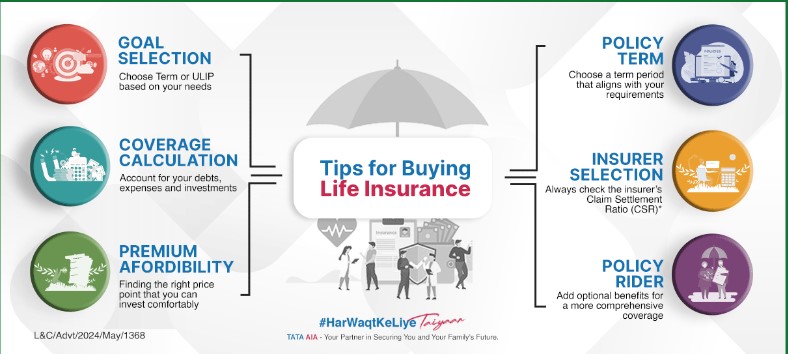
Pet insurance plays a crucial role in ensuring the well-being of our beloved furry friends. It provides financial security, accessibility to veterinary care, and promotes responsible pet ownership. By encouraging preventive care, facilitating prompt diagnosis and treatment, reducing economic constraints, and enhancing health monitoring, pet insurance contributes to better veterinary care outcomes. In this article, we will explore the various ways in which pet insurance promotes and supports the overall health and welfare of pets.
Introduction
Pets hold a special place in our hearts, and their health is a top priority for pet owners. However, medical expenses associated with veterinary care can be a burden. This is where pet insurance comes to the rescue, providing peace of mind and ensuring that pets receive the necessary medical attention when needed.
The Importance of Pet Insurance
Financial Security
Pet insurance offers financial protection by covering a portion of veterinary expenses. It helps pet owners afford necessary treatments, surgeries, medications, and emergency care without incurring substantial out-of-pocket costs. This financial security allows pet owners to make decisions based on their pets’ best interests rather than solely on financial considerations.
Accessible Veterinary Care
Having pet insurance makes veterinary care more accessible. Pet owners are more likely to seek professional help promptly when their pets fall ill or require medical attention. They can visit veterinarians without delay, ensuring that their pets receive timely care and interventions, which can significantly improve the chances of successful treatment.
Encouraging Preventive Care
Regular Check-ups
One of the fundamental aspects of preventive care is regular check-ups. Pet insurance promotes routine visits to the veterinarian, even when there are no apparent health issues. These check-ups allow veterinarians to detect potential health problems early on, preventing the development of more serious conditions and ensuring timely interventions.
Vaccinations and Preventive Treatments
Pet insurance encourages pet owners to stay up-to-date with vaccinations, parasite control, and other preventive treatments. These measures protect pets from common diseases, infestations, and potential health risks. By covering the costs of these preventive measures, pet insurance incentivizes responsible pet ownership and contributes to better overall health outcomes.
Prompt Diagnosis and Treatment
Timely Veterinary Visits
With pet insurance, pet owners are more likely to seek veterinary care at the earliest signs of illness or injury. Timely visits to the veterinarian enable prompt diagnosis, leading to quicker treatment and improved recovery rates. Pet insurance removes the hesitation caused by financial concerns, allowing pet owners to prioritize their pets’ healthand well-being.
Early Intervention
Early intervention is crucial in managing and treating various health conditions in pets. Pet insurance facilitates early intervention by removing financial barriers. Pet owners can seek veterinary care as soon as symptoms arise, leading to faster diagnoses and more effective treatment plans. Early intervention can significantly improve the chances of successful outcomes and minimize the potential for complications.
Reducing Economic Constraints
Expensive Treatments and Surgeries
Pets may require expensive treatments or surgeries at some point in their lives. Pet insurance helps alleviate the financial burden associated with these procedures. It covers a portion of the costs, allowing pet owners to provide their pets with the necessary care without hesitation. This financial support ensures that pets can receive the best possible treatments, leading to better veterinary care outcomes.
Emergency Situations
Emergencies can occur at any time, and quick action is crucial. Pet insurance provides peace of mind during these unexpected situations. It covers emergency treatments, hospitalization, and critical care, ensuring that pets receive immediate attention without the added stress of financial constraints. By removing financial barriers, pet insurance promotes better veterinary care during emergencies, potentially saving lives.
Enhanced Health Monitoring
Diagnostic Tests and Procedures
Proper health monitoring is essential for pets, especially those with chronic conditions or older pets. Pet insurance covers diagnostic tests, including blood work, X-rays, ultrasounds, and other procedures. These tests help veterinarians monitor a pet’s health, detect any underlying issues, and adjust treatment plans accordingly. With pet insurance, pet owners can afford these necessary tests, ensuring comprehensive health monitoring for their pets.
Monitoring Chronic Conditions
Pets with chronic conditions, such as diabetes or arthritis, require ongoing care and monitoring. Pet insurance assists pet owners in managing these conditions effectively. It covers medications, regular check-ups, and treatments required for chronic conditions. By providing financial support for the long-term management of these conditions, pet insurance promotes better veterinary care and improves the quality of life for pets.
Promoting Responsible Pet Ownership
Education and Information
Pet insurance providers often offer educational resources and information to pet owners. This helps raise awareness about preventive care, responsible pet ownership, and the importance of regular veterinary check-ups. By promoting education and providing valuable resources, pet insurance companies empower pet owners to make informed decisions regarding their pets’ health and well-being.
Encouraging Adoption
Some pet insurance providers collaborate with animal shelters and rescue organizations to promote pet adoption. They may offer special coverage plans for newly adopted pets, incentivizing responsible pet adoption. By supporting adoption efforts, pet insurance companies contribute to better veterinary care for rescued animals, ensuring they receive the necessary medical attention from the start.
The Role of Pet Insurance Providers
Pet insurance providers offer various coverage options to suit different pet owners’ needs. They typically have a straightforward claim process, making it easy for pet owners to submit and process claims. Additionally, many providers offer additional benefits such as coverage for alternative therapies, dental care, and behavioral consultations. These comprehensive coverage options and additional benefits enhance the overall veterinary care provided to pets.
Common Misconceptions about Pet Insurance
Exclusions and Pre-existing Conditions
One common misconception about pet insurance is that it doesn’t cover pre-existing conditions. While pre-existing conditions are generally excluded from coverage, it’s important to note that pet insurance can still provide coverage for any new illnesses or injuries that occur after the policy is in effect. It’s crucial for pet owners to review the policy terms and understand the coverage limitations and exclusions.
Cost-effectiveness
Some pet owners may perceive pet insurance as an unnecessary expense. However, when considering the potential costs of veterinary treatments, surgeries, and emergency care, pet insurance can be cost-effective in the long run. It provides financial security and peace of mind, ensuring that pet owners can providethe necessary care for their pets without facing overwhelming financial burdens.
Conclusion
Pet insurance plays a vital role in promoting better veterinary care. It offers financial security, making veterinary care more accessible and affordable. By encouraging preventive care, facilitating prompt diagnosis and treatment, reducing economic constraints, and enhancing health monitoring, pet insurance supports the overall well-being of pets. It promotes responsible pet ownership and ensures that pets receive the necessary medical attention they deserve. Investing in pet insurance is a proactive step towards providing comprehensive and high-quality veterinary care for our beloved pets.
FAQs
What does pet insurance cover?
Pet insurance typically covers veterinary expenses, including treatments, surgeries, medications, and emergency care. Coverage may vary depending on the policy.
Can I get pet insurance for older pets?
Yes, many pet insurance providers offer coverage for older pets. However, certain limitations or exclusions may apply, so it’s important to review the policy terms.
Is pet insurance worth it if I have a healthy pet?
Yes, pet insurance can still be beneficial for healthy pets. It provides financial security in case of unexpected illnesses, accidents, or emergencies.
How soon can I make a claim after purchasing pet insurance?
The waiting period before making a claim varies among insurance providers. It’s important to check the policy details to understand the waiting period for different types of claims.
Are routine procedures covered by pet insurance?
Routine procedures, such as vaccinations and annual check-ups, are typically not covered by pet insurance. However, some providers offer optional wellness plans that cover routine care.






